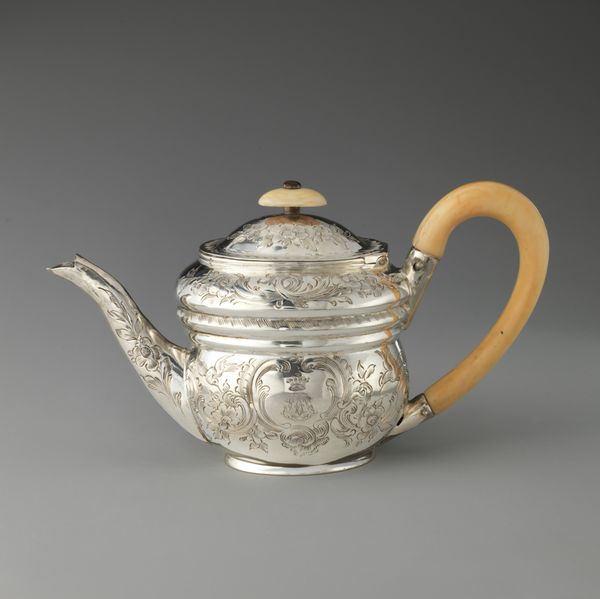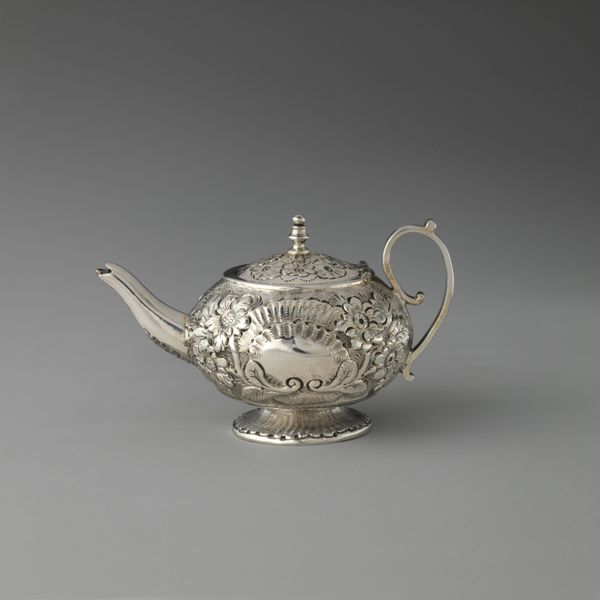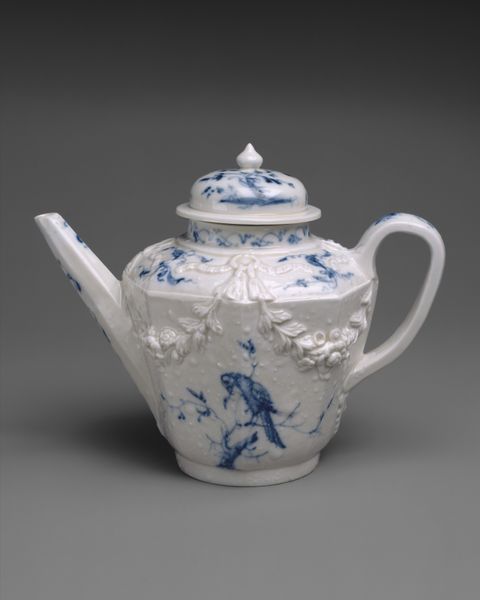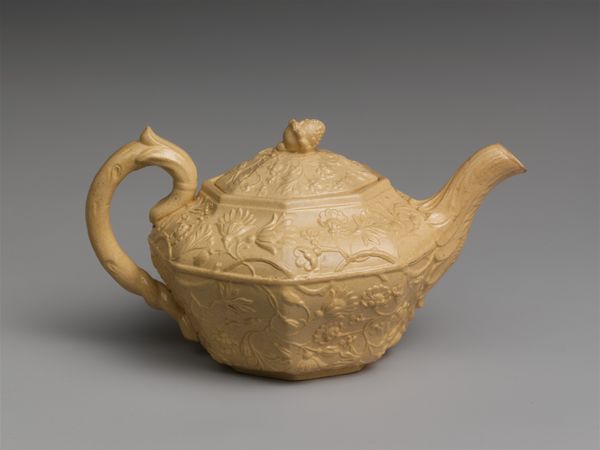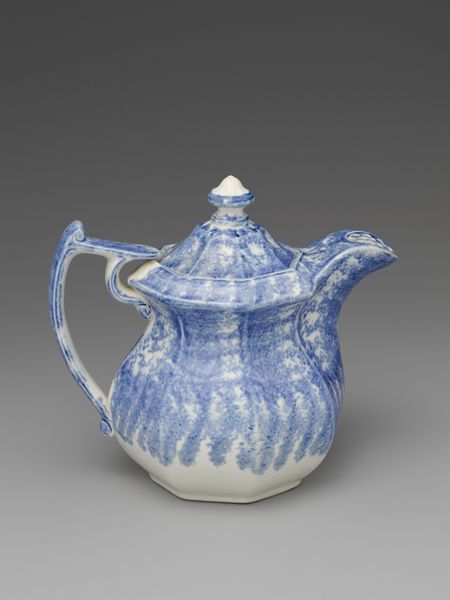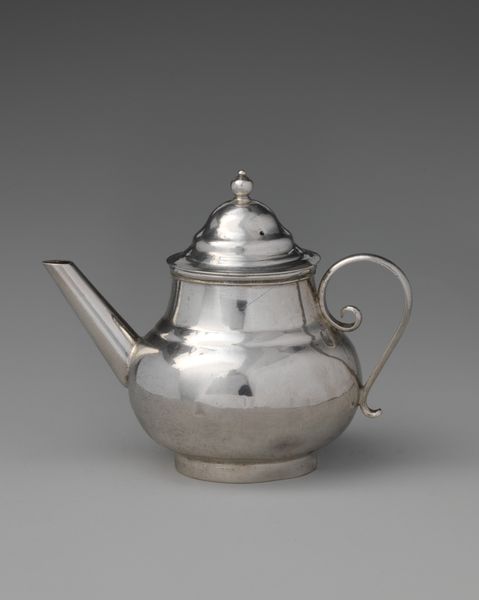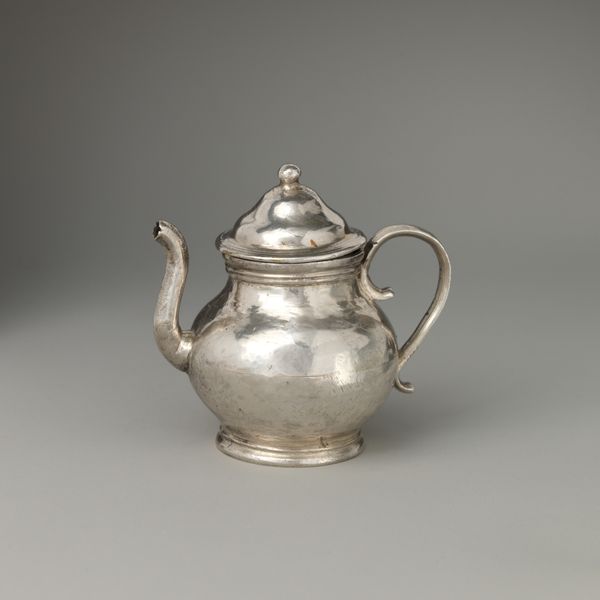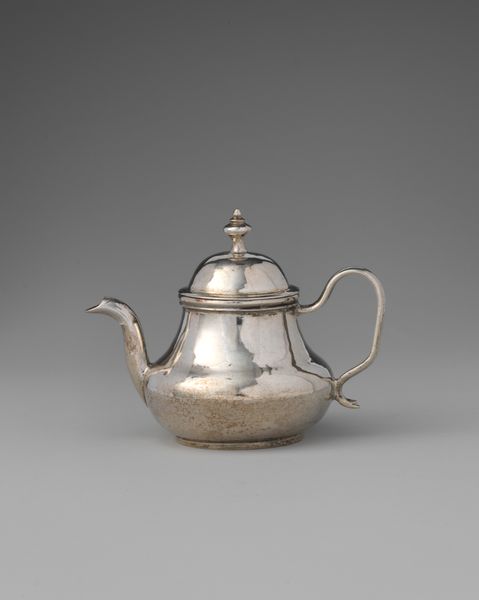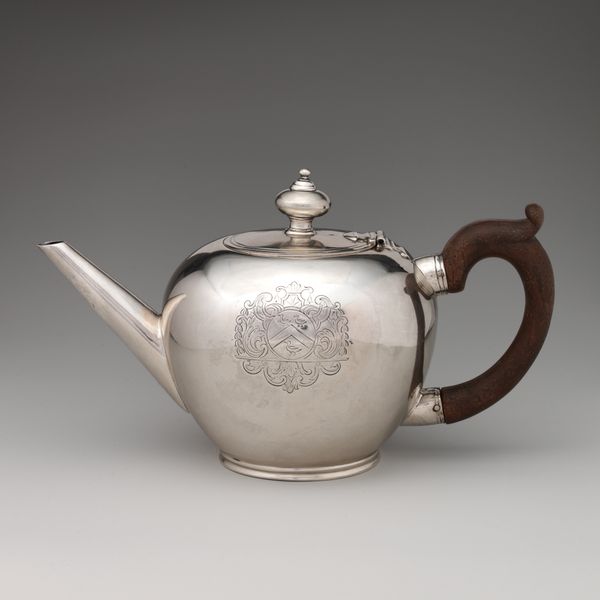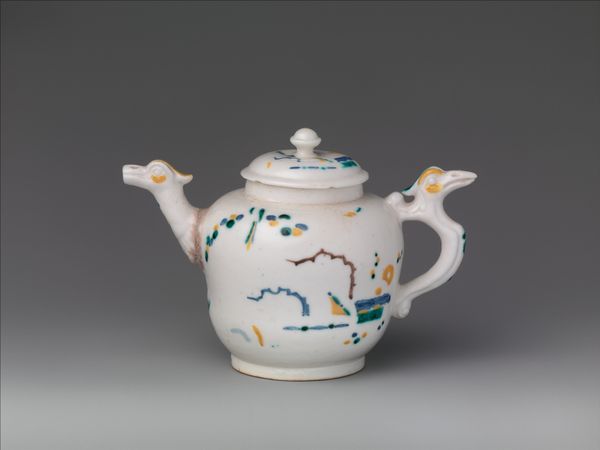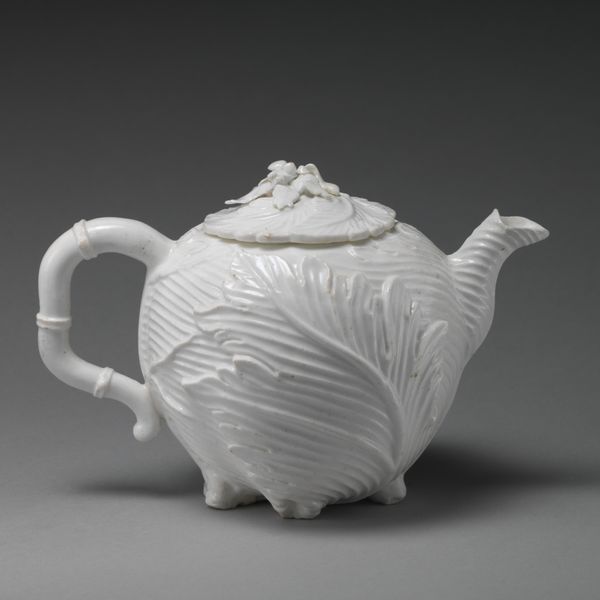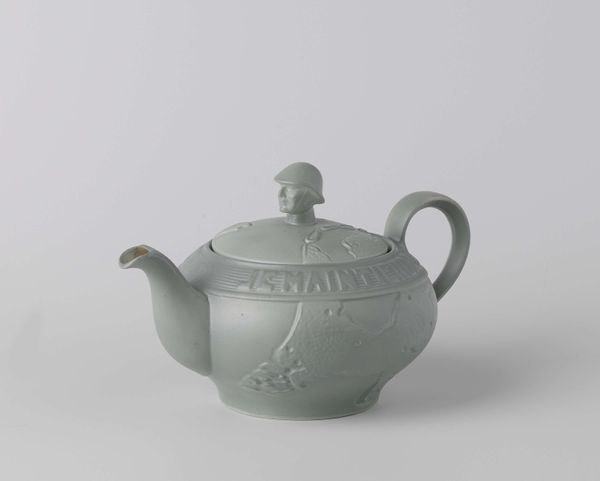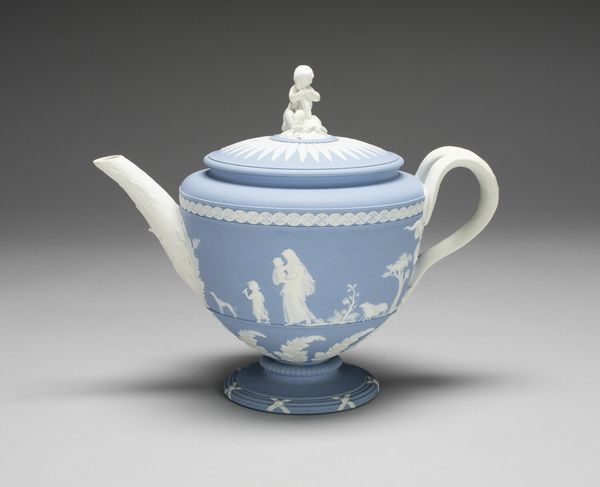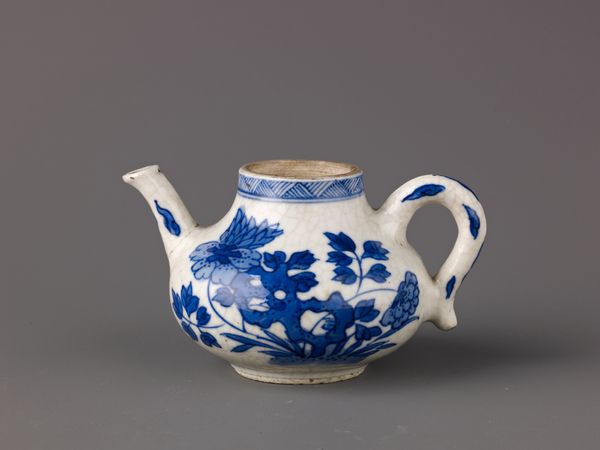
ceramic, porcelain
#
neoclassicism
#
ceramic
#
porcelain
#
stoneware
#
ceramic
#
decorative-art
Dimensions: H. 3 3/4 in. (9.5 cm); Diam. 4 3/4 in. (12.1 cm)
Copyright: Public Domain
Curator: Looking at this image, I’m immediately struck by its restrained elegance. It's so purely white, giving it an almost ethereal quality. Editor: Indeed. What you’re seeing is a porcelain teapot, crafted around 1838 by the American Pottery Manufacturing Company. Currently, it resides at the Metropolitan Museum of Art in New York. The design draws heavily from the Neoclassical style, a conscious echo of European high culture. Curator: The Neoclassical influence is so apparent in its striving for idealized form. Though, within an American context, doesn't it feel like something more than simple emulation? Perhaps a claim to legitimacy on the global stage? I see echoes of social hierarchies reflected in the very design. Editor: Precisely! Porcelain, even then, carried connotations of wealth and refinement. Consider who had access to tea at this time and what it symbolized: commerce, colonialism, even class distinction. Curator: I hadn’t thought of that but it makes a lot of sense, yes! The decorative details are compelling as well – all those flowers look very skillfully realized. Almost like frozen gestures, carrying collective memory forward. Editor: Yes, they point to nature as an ordered, controlled ideal – again a Neoclassical trait. Perhaps a cultural memory of pastoral idyll amidst the emerging industrial landscape? The teapot, like many decorative objects, becomes a vessel not only for tea, but for aspirations, anxieties, and complex power dynamics. Curator: Absolutely. It also feels very… fragile. A stark white surface like that is a clear marker of what can and cannot be tolerated, no? Its historical preservation depends entirely on its perceived cultural significance as determined by a globalist aesthetic. Editor: A compelling thought! Its survival, then, becomes a silent form of cultural resistance, a whisper of histories carefully maintained. What a lot this object communicates for what it is! Curator: It's certainly revealed the depth within even everyday objects!
Comments
No comments
Be the first to comment and join the conversation on the ultimate creative platform.
